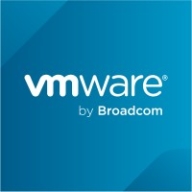

Find out in this report how the two Container Registry solutions compare in terms of features, pricing, service and support, easy of deployment, and ROI.
| Product | Market Share (%) |
|---|---|
| Red Hat Quay | 8.0% |
| VMware Harbor Registry | 1.6% |
| Other | 90.4% |

Red Hat Quay is a private container registry that stores, builds, and deploys container images. It analyzes your images for security vulnerabilities, identifying potential issues that can help you mitigate security risks.
VMware Harbor Registry is an enterprise-class registry server that stores and distributes container images. Harbor allows you to store and manage images for use with Enterprise Pivotal Container Service (Enterprise PKS).
We monitor all Container Registry reviews to prevent fraudulent reviews and keep review quality high. We do not post reviews by company employees or direct competitors. We validate each review for authenticity via cross-reference with LinkedIn, and personal follow-up with the reviewer when necessary.